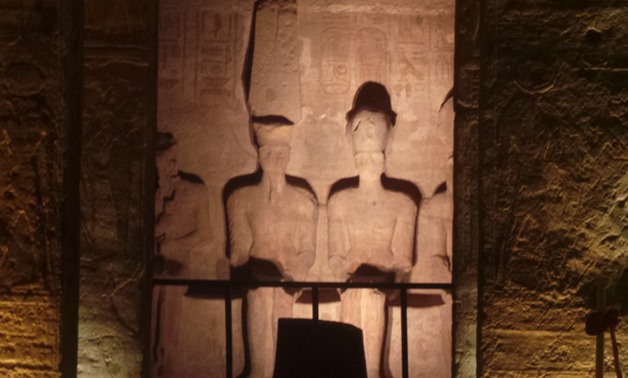
FILE- Sun illuminates four statues of King Ramses II seated at the top of Abu Simbel temple- Egypt TodayAbdullah Salah
CAIRO – 18 October 2020: The National Research Institute of Astronomy and Geophysics (NRIAG) would hold a celebration of the phenomenon of Ramses II Temple solar alignment in Abu Simbel on October 22.
It will be a scientific celebration that includes several lectures, in cooperation with the Nile Museum and the Aswan and Abu Simbel antiquities regions, according to President of the National Institute for Astronomical Research, Jad Al-Qadi, in a statement on Saturday.
Qadi explained this comes as part of the role the institute plays in enriching the scientific culture in society and encouraging tourism, by recording some observations during the event and contributing to astronomical awareness.
"During the celebration, a group of researchers at the institute will give some public lectures on the astronomical phenomenon at the Syndicate of Engineers in Aswan, on October 19, followed by a lecture at the Nile Museum on October 20, then lectures in the tourist village in Abu Simbel, on October 21," Qadi added.
The institute’s scientists will then make some astronomical measurements in Abu Simbel area in preparation for observing the phenomenon on the morning of Oct. 22, using the latest equipment in that field.
The institute will broadcast these lectures on its website and the institute's social media pages to spread the benefit.
Qadi said that the Abu Simbel temple is the largest temple carved in rocks in the world. It was carved in a rock piece on the west bank of the Nile in a place of great beauty, to worship the sun.
The phenomenon of solar alignment on the Holy of Holies in the Temple of Ramses II in Abu Simbel occurs twice every year on February 22 and October 22, as the sun's rays penetrate the front corridor of the entrance to the Temple of Ramses II with a length of 200 meters until it reaches the Holy of Holies.
He explained that the Holy of Holies consists of a platform that includes the statue of King Ramses II, sitting next to it the statue of the god Ra-Hor, his sister, the god Amun and the statue of the god Ptah. The sun does not light up the face of Ptah, considered by the ancient Egyptians as the god of darkness.
Comments
Leave a Comment